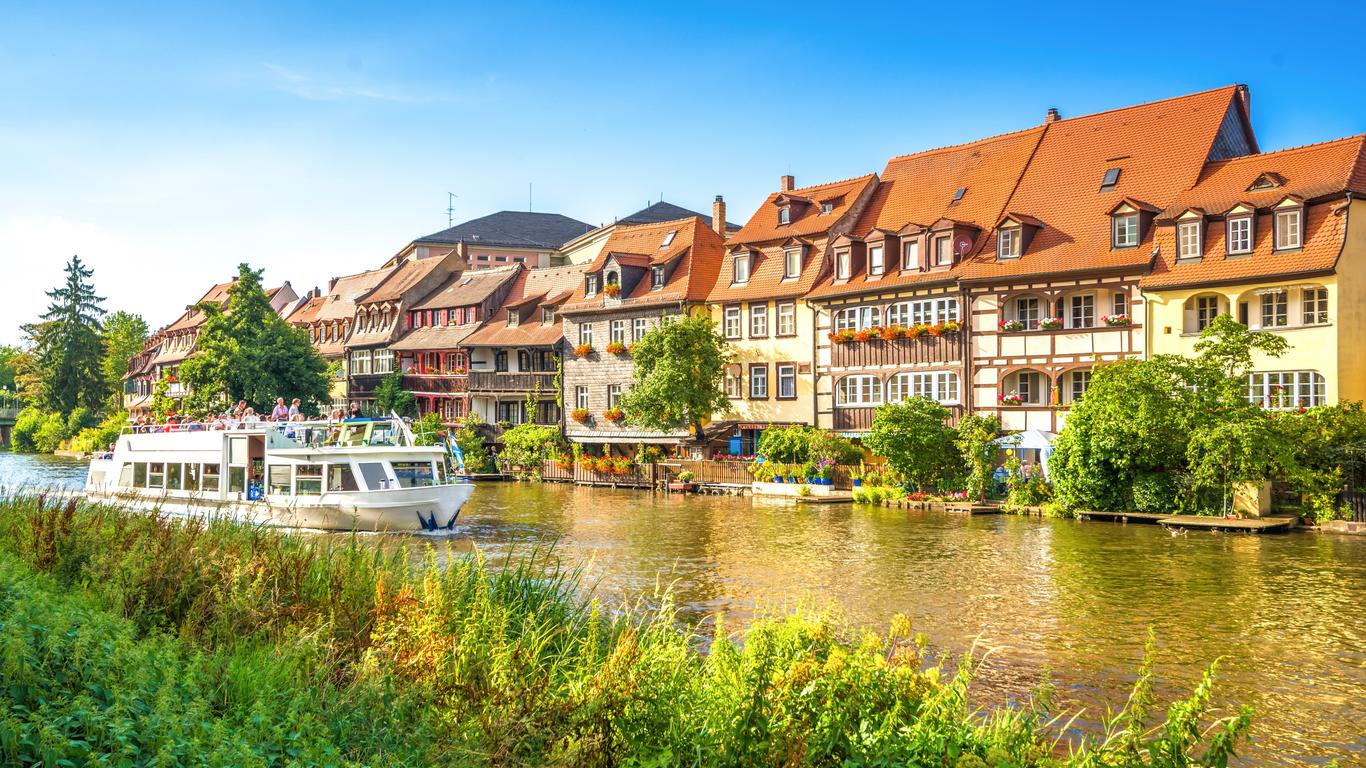Sprawling over seven hills in Upper Franconia where the Regnitz and Main Rivers meet, Bamberg features a well-preserved Old Town that has been listed as a UNESCO World Heritage Site. It exhibits architectural styles dating from the 11th to 19th centuries and has often been nicknamed the “Franconian Rome”.
The 14th century Altes Rathaus is one of Bamberg’s most photographed sites, occupying an island in the middle of the Regnitz River and connected by two small bridges. Bamberg Cathedral, dating to 1237, houses the tombs of Emperor Henry II and Pope Clement II, together with the iconic Bamberg Horseman equestrian statue, designed by an unknown medieval sculptor. The gothic-styled Church of Our Lady is also of note and home to an impressive baroque organ, together with the 11th century Romanesque basilica of Jakobskirche. Alte Hofhaltung which once served as the bishop’s residence dominates the highest of Bamberg’s hills and is now home to the city’s Museum of History. Neue Residenz was the seat of Bamberg’s prince-bishops from the 17th century and today exhibits Baroque paintings within its stately rooms adorned with period furnishings, tapestries and ornate stucco ceilings. Its Rose Garden exhibits more than 4,500 roses and provides impressive views across the Old Town. Each of Bamberg’s seven hills is crowned by a church, including the 12th century Michaelsberg Abbey which now functions as an almshouse. Along the banks of the Regnitz River is Klein-Venedig, or "Little Venice”, a group of fishermen's houses which date to the 17th century and serve as the backdrop for the annual Sandkerwa folk festival.
Bamberg is connected to Munich, Berlin, Nuremberg and Würzburg by frequent trains from its Hauptbahnhof which is located north-east of the Altstadt. The cobblestone streets of the Old Town are narrow and largely pedestrianised, making them best explored on foot.
Serving as an important trade link with Poland and Pomerania from the 10th century, Bamberg’s architecture heavily influenced that of both Germany and Hungary. It became the centre of the Enlightenment in Southern Germany during the late 18th century, with the likes of German philosopher Georg Wilhelm Friedrich Hegel and Prussian author Ernst Theodor Amadeus Hoffmann having called the town home.





